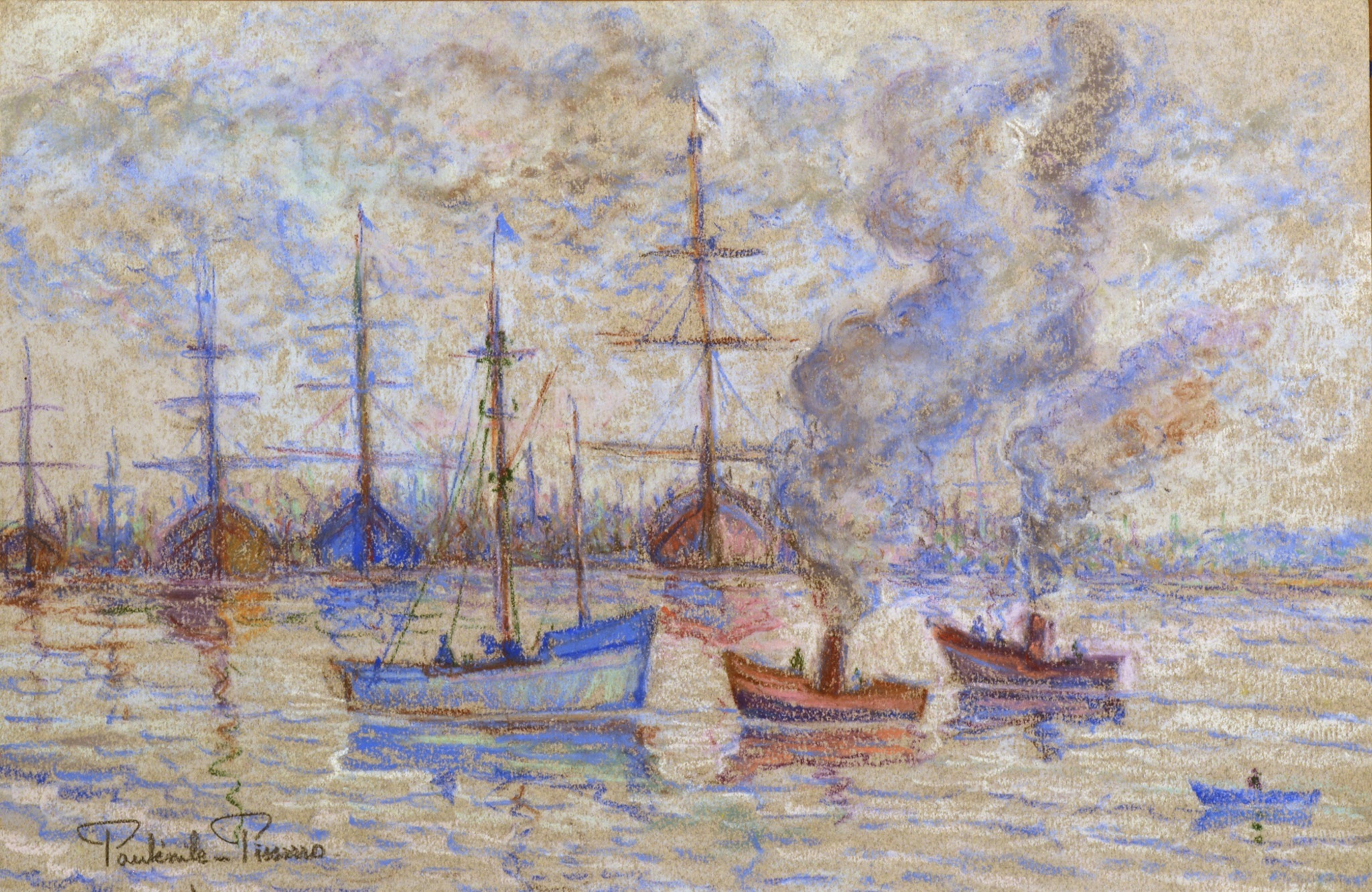About The Artwork
Of French Impressionist painter Camille Pissarro’s eight children, five followed in their father’s footsteps and became artists, including the youngest son, Paulémile. Surrounded by creative individuals (Claude Monet was his godfather) and encouraged to draw at an early age, Paulémile honed his craft and adopted a fondness for Impressionist subject matter, notably rural and marine themes. After Camille’s death in 1903, Paulémile set aside artistic pursuits and worked as an automobile mechanic and, later, a lace designer. By the 1920s, however, Pissarro turned back to painting full time and became an artist of note. His work was shown in the Salon des Indépendants, the Salon d’Automne and the Salon des Tuileries in Paris.
Although classified as a post-Impressionist painter, in Seascape Pissarro echoes the Impressionist penchant for capturing the effects of light and color. In this loosely rendered but highly structured image, sailing vessels command the low horizon. Their upright masts provide a vertical contrast to the wavy lines used to render both clouds and water, and maintain a strong framework against the evanescent steam rising from the two small tugboats in the foreground. Reflections of the boats on the water visually link sky and sea. Shadows contain only shades of an object’s color; thus, a blue boat is modeled using only darker blue instead of black or gray (an Impressionist technique). The overall effect is of a bustling harbor on a bright morning.
The Pissarro family artistic legacy continued in Hughes-Claude and Yvon Pissarro, two of Paulémile’s children, who also became artists.
ELLEN ADAMS
Assistant Professor, Frederik Meijer Honors College, Grand Valley State University

